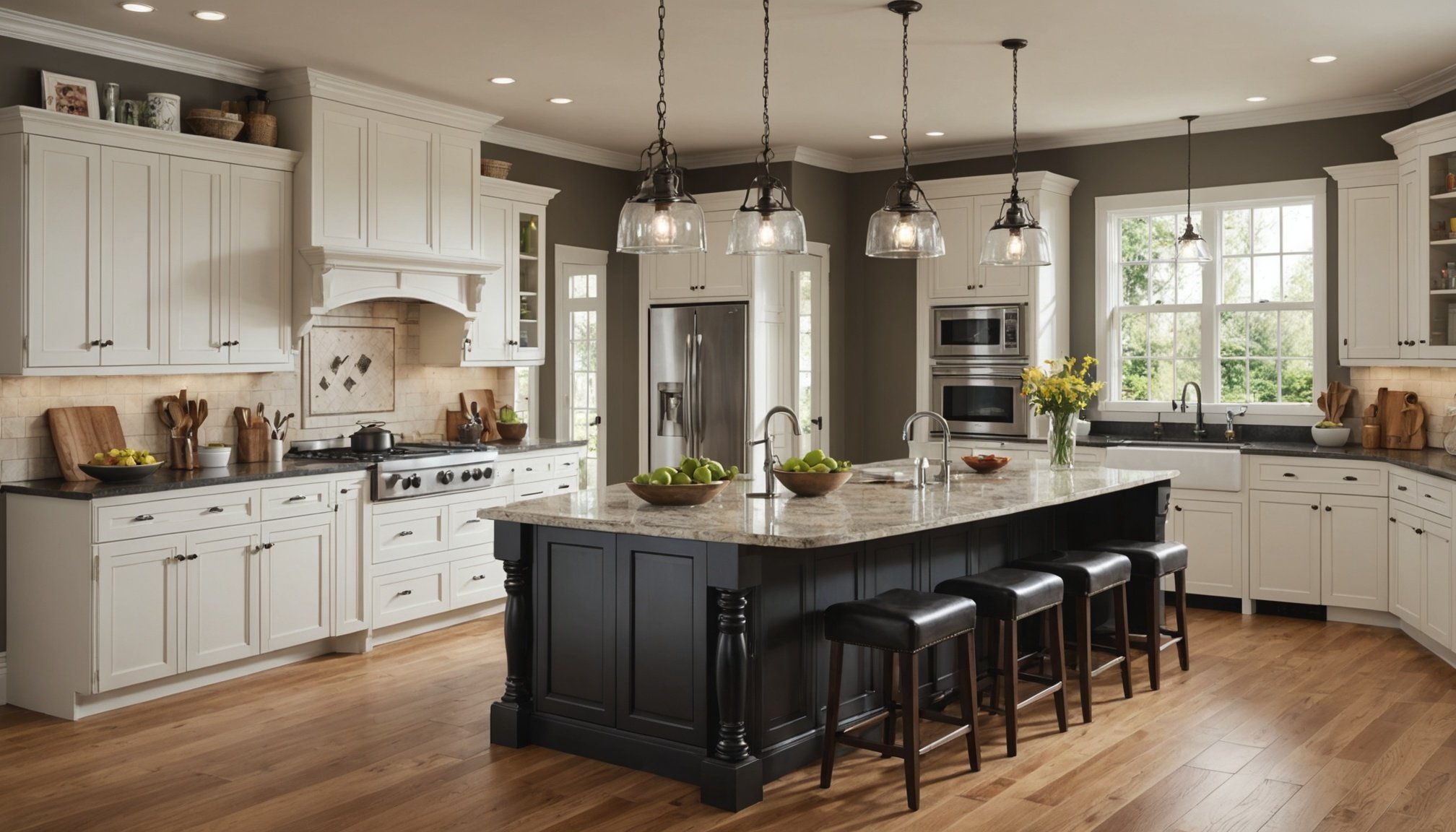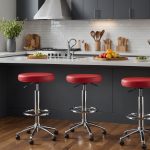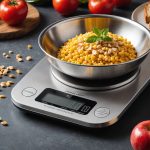Understanding Kitchen Island Dimensions
When considering the kitchen island size, it’s crucial to base it on the existing kitchen layout and available space. The dimensions directly impact both movement and functionality within your cooking environment. A well-sized island can dramatically enhance meal prep space by providing ample room for activities like cutting, mixing, and assembling dishes, all while keeping the kitchen organized and efficient.
In general, smaller kitchens benefit from islands that are around 4 feet long and 2 feet wide, ensuring there’s enough room to move around freely. For more spacious kitchens, islands could extend to 7 feet by 3 to 4 feet, providing extensive meal prep space without crowding the area. Islands of this size offer additional perks, such as extra seating and storage.
Also read : Best Kitchen Ceiling Materials to Minimize Dust and Enhance Cleanliness
The impact of kitchen island size on meal prep efficiency cannot be overstated. A thoughtfully sized island not only augments cooking space but also promotes a smoother workflow. This allows for easy access to ingredients and tools without excessive movement. Consequently, adjusting the kitchen layout to accommodate the right-sized island can lead to a more enjoyable cooking experience. Strategically planning these dimensions enhances the kitchen’s functionality and aesthetic harmony.
Essential Functionalities of Kitchen Islands
When designing a kitchen island, it’s key to consider features that enhance multi-functionality and enrich meal prep zones. Common functionalities include built-in storage for cookware and utensils, which can be cleverly incorporated under the island to keep essential items within reach. This not only optimizes meal prep zones but also helps maintain a tidy kitchen by reducing countertop clutter.
Moreover, many islands integrate seating arrangements, transforming them into informal dining areas or breakfast nooks. This feature is particularly beneficial in open concept layouts, where the kitchen island can seamlessly connect to the living space. Including appliances like mini-fridges or cooktops directly in the island can further enhance its role as a hub of activity.
Designing the island layout for optimal workflow and accessibility is also crucial. This involves ensuring that the kitchen’s work triangle – the path connecting the stove, fridge, and sink – isn’t disrupted, thus promoting efficient movement and task execution. Considering the proportionate relationship between kitchen island features and available space can lead to a kitchen capable of handling multiple functions comfortably, while still looking stylish and inviting. Implement these strategic designs to maximize utility without sacrificing elegance.
Ergonomic Considerations in Island Design
Designing a kitchen island with ergonomic kitchen design principles ensures not only comfort but also enhances the overall user experience. A critical factor is the island’s height, which significantly affects how comfortably individuals can perform tasks. The recommended height for preparing meals is about 36-38 inches, accommodating both standing and seated activities efficiently.
Clearance around the island also plays a vital role in promoting ease of movement, an essential aspect of ergonomic kitchen design. Experts advise maintaining at least 40-46 inches of clearance surrounding the island to allow for unobstructed access and hassle-free navigation during meal prep.
Moreover, incorporating adjustable seating and varying counter heights can further improve comfort. This approach caters to diverse user needs and activities, from casual dining to cooking.
Designing for accessibility ensures everyone, regardless of physical ability, can utilise the kitchen comfortably. Implementing pull-out shelves and drawer organizers enhances usability, making items easily reachable.
Additionally, appliances placed at a convenient height prevent discomfort during prolonged use. Through thoughtful planning and attention to ergonomic details, kitchen islands can greatly contribute to a safer and more enjoyable cooking environment, while seamlessly integrating with the overall kitchen layout.
Visualizing Your Ideal Kitchen Island
Creating the perfect kitchen island is about marrying function with style. With several kitchen island design ideas at your disposal, envisioning the ideal island for your space can become an exciting endeavor. It’s important to consider both aesthetics and practicality while allowing your culinary workspace to reflect personal taste.
Examples of Kitchen Island Designs
Different design approaches cater to various needs and preferences. For instance, a minimalist island with clean lines and neutral tones might suit a modern design approach. In contrast, a rustic kitchen might benefit from an island crafted from reclaimed wood and adorned with vintage hardware.
Layout Configurations for Different Spaces
Island layouts can be customised to fit any kitchen. In smaller spaces, a compact, mobile island can offer functionality without overcrowding. Conversely, a large L-shaped island can serve extensive spaces, fostering an engaging and lively atmosphere for both cooking and socialising.
Color and Material Choices for Aesthetic Appeal
When selecting materials and colours, balance durability with visual appeal. Opt for natural stone countertops for elegance and resilience, paired with a touch of colour through cabinetry or seating to create visual interest. The right selections can enhance the overall aesthetic appeal of your kitchen, making it an inviting focal point.
Tips for Meal Prep Efficiency with Kitchen Islands
Enhancing meal prep efficiency in the kitchen begins with smart organization and strategic planning. One pivotal element is arranging tools and ingredients for optimal accessibility, enabling a streamlined cooking experience. Grouping items based on task requirements near your kitchen island can minimise unnecessary steps and time spent searching for essentials.
To further boost efficiency, create a designated space for frequent activities. For instance, a cutting board and knives can be placed within arm’s reach of vegetable storage, whilst baking ingredients and tools could have a dedicated area near mixing appliances. By prioritizing kitchen organization, you ensure a swift transition between various meal prep steps.
Efficiency strategies also involve maintaining a clutter-free environment. Utilize the storage solutions your island offers, such as drawers or shelves, to keep countertops clear and promote a tidy workspace. This not only facilitates a smoother culinary process but also enhances the kitchen’s overall aesthetic appeal.
Finally, consider versatile kitchen island features that adapt to different tasks, such as incorporating a pull-out counter for additional workspace when needed. By employing these meal prep tips, you’ll optimize your kitchen’s function and style, creating an enjoyable and productive cooking atmosphere.











